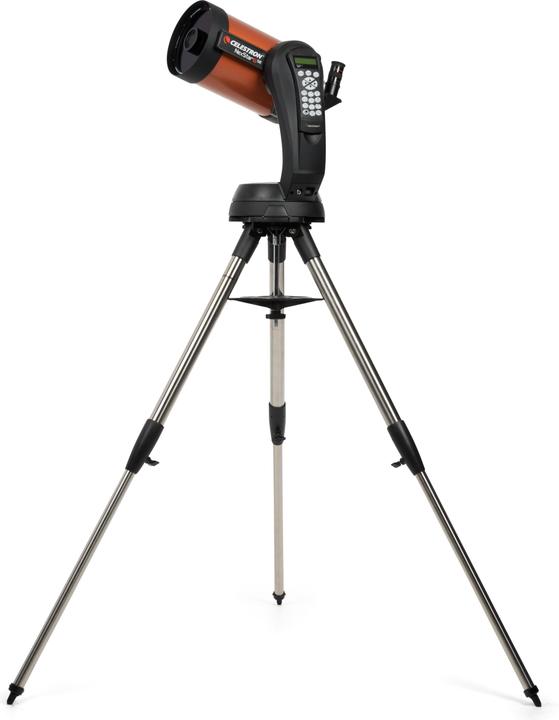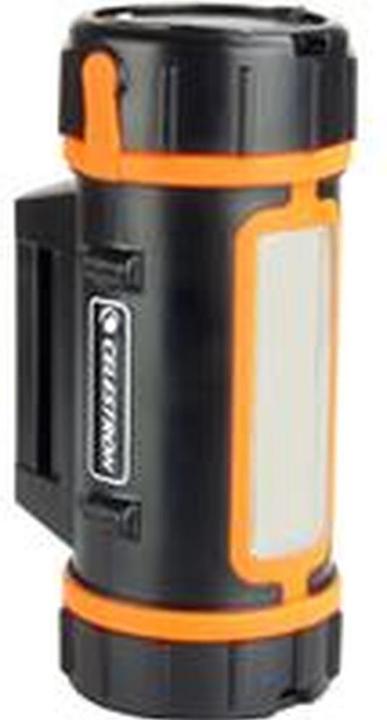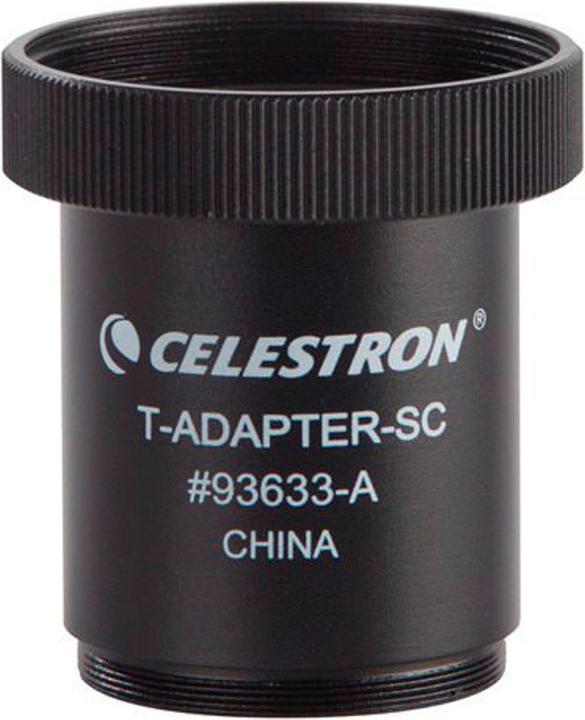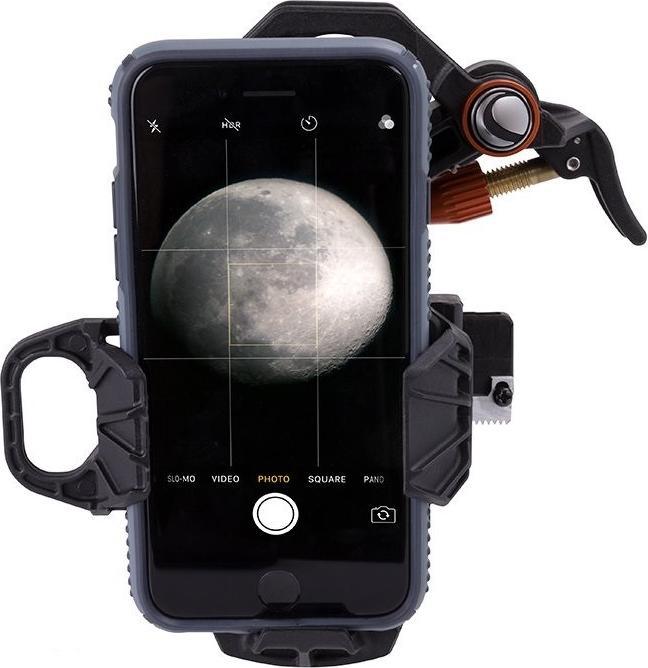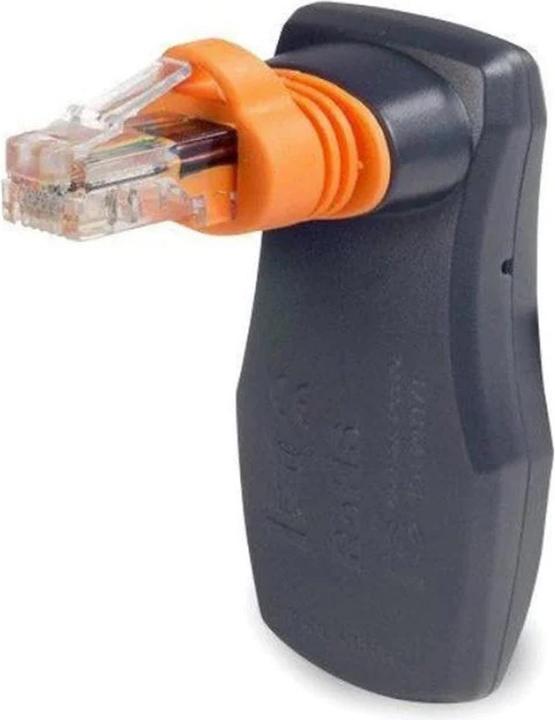
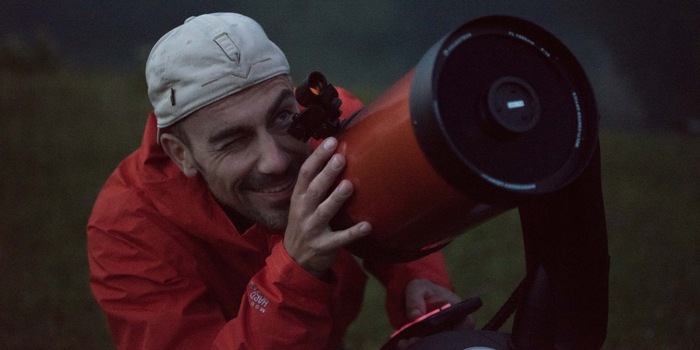
A telescope test with obstacles
I like to see stars. Head down, eyes wide, feel small and enjoy the view. That can be heaven on earth. But this night I'm looking down the tube with the Celestron NexStar 6SE. The result is not a review, but an experience.
There we are, fingers clammy, in the dimmest place on a cold summer night. Chasing satellites, planets and stars we've never heard of with telescopes and cameras. We, that's photographer Tom and me. Cloud veils obscure the view, mountain peaks rise up to Jupiter and the moon is too fast for us. It's shitty. And it's fun. It's the story of two blind chickens who sometimes find a star in the endless expanse of the universe.
Aim for the moon. If you miss, you may hit a star.
How did this come about? When it comes to the sky, I'm romantically inclined. I don't need to know that Ras Alhague is a star in the constellation of the Serpent Bearer with an apparent visual magnitude of +2.1 mag. I don't want to deal with position angles, coordinates and correction factors. I want to be overwhelmed by the sight of the starry sky. Looking up like this changes everything. It calms you down and makes you doubt that your own worries are the centre of the universe. Whether the sun rises or the world sets is, universally speaking, just a question of perspective.
When Ras Alhauge sent his now visible light on its journey, Richard Nixon was president of the USA, there was an oil crisis instead of climate change and I was nowhere near this planet. Everything is different on our precious blue marble, but somehow the same. Problems, crises and a controversial figure as the leader of the free world. Time to give your head a break. Some things will never change. "Why worry now?", sang Dire Straits, while Ras Alhauges' light wafted through the cosmos on the way to the here and now.
These things have always been the same. So why worry now?
Staring at the stars, I think of holiday evenings in my childhood. How we stood by the Adriatic Sea, waited for shooting stars, sent wishes into the night sky and were bitten by mosquitoes. When I read that Ras Alhauge is a member of the Ursa-Major-Strom, I think of terror reports in the news programme "Tagesschau": "Investigators say that Ras Alhauge, who is a wanted man, is a member of the Ursa-Major-Strom, which has since claimed responsibility for the crime." Something like that.
I don't want to know everything exactly. I prefer to marvel. I'm good at marvelling. And I was quite amazed at the consequences of my sentence "I'd like to try out a telescope". I had something like this in mind:

A visual aid to occasionally peer into space. A bit of moon gazing. That's where everyone wants to go again, build settlements and take off for Mars. Jeff Bezos, the richest man in the world. Elon Musk, the most insane visionary in the business world. Donald Trump anyway. Our good, old, pale Trabant won't be as empty as before for much longer. So: take a quick look.
I didn't get a cute newcomer pipe, but one that even Trump might like. A really big one. Motorised, with a wifi adapter and a kind of mobile phone on the side. The Celestron NexStar 6SE. With a friendly warning to be careful when setting it up. It could fall down. And that wouldn't be good.
What the hell is that?
I hardly dare to unpack it. The NexStar 6SE is a telescope you get if you're serious. If you want to know what the hell Ras Alhauge is up to with his Ursa Major group. After all, globular clusters are already being partially resolved with the NexStar 6SE. However, it's only the second largest in the series, so nothing for Trump.
Buzzwords I read in connection with my telescope: Azimuth mounted. Maksutov design. Q-Turret eyepiece turret. If a Klingon with Tourette's syndrome were standing in front of me, I would understand no less. I am all the more astonished to realise that the NexStar 6SE is described on the all-knowing Internet as one of the best telescopes for beginners. Set it up, get started, it's all very simple. Oh yes, very good! Nevertheless, I'll be keeping it in its thick black case for quite a while.
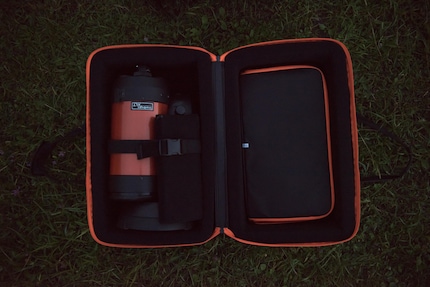
There's always something
Have you tried catching up with some old friends lately? Something always comes up. Weddings, holidays, fully booked weekends. Everyone's flicking through their diaries and the next possible date has "Last Christmas" playing on the radio again. I feel the same way about the moon and the stars. If I have time and am motivated, the sky over Zurich is cloudy. If a few stars appear, the moon is nowhere to be seen. If I wake up at night completely exhausted, it's because of the pale moonlight filtering through the blinds.
Days turn into weeks. The moon is on every channel because Neil Armstrong was the first person to set foot on it 50 years ago and Buzz Aldrin was the first person to pee in a spacesuit there. The moon is everywhere, except for me. It's like a spell. I really want to try out the telescope. I practise my patience and start practising setting it up. Accident-free. Only the dust cap ends up on the floor.
In principle, quite simple
At some point, and it's like a revelation, a thin crescent moon appears over the rooftops of the city. It's now or never. Good thing I've been practising. Off to the balcony. Set up and secure the tripod, screw on the telescope, attach the eyepiece, attach the StarPointer, connect the power tank and switch on. The telescope is already energised. Me too.
Looking deep into the craters
With the control unit in my hand, which is connected to the telescope via a ringed cable (the older ones among us will know this from telephones), I point the giant orange tube at the moon. It moves at the touch of a button. I feel like I'm at a battle station and activate the StarPointer, which is a kind of telescopic sight. Once I turn the little plastic wheel, a red laser dot appears in its centre, which I can use to aim at objects. Bull's eye. There's the moon. My moon.
A moon that I have never looked so deeply into the craters as I do now, as I watch it shimmering and live through the eyepiece. It makes a difference whether it's some moon that some photographer or film-maker has photographed and made available to the whole world. Or whether you see it yourself. This one is mine. Me here, him there. My exclusive perspective, which I would like to share. No sooner have I called a few onlookers onto the balcony than he's already gone.
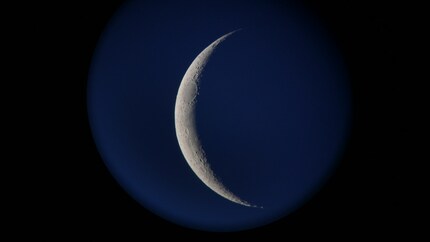
The moon is fast. I begin to understand why the automatic object tracking that the NexStar 6SE is capable of could be a great function. For the moment, I use the remote control to swivel the telescope into position on spec and catch the pale crescent just before it disappears behind the horizon somewhere in the Limmat valley with the last light of day.
Live ticker from the universe
In the following days, the moon proves to be reliable. It even appears a little earlier and rises higher. A few stars also twinkle above the city and give me the opportunity to look deeper into space. To be able to use the NexStar 6SE sensibly, I first have to align it. There are various options for this "alignment", according to which the telescope knows the night sky at your position and should be able to automatically target and track celestial objects.
And there are also various ways to control the telescope. In addition to the remote control, there is also a WiFi adapter in my test case. Because, of course, there is an app for everything. This turns your smartphone or tablet into a command centre that you can use to operate the telescope. This may be helpful because you can select the celestial bodies on a map. And it may be nice in winter when the NexStar is outside and the advanced amateur astronomer doesn't want to wait out the cold, but instead transmits the images live to their command centre.
I don't have and don't want anything like that. I want to look up at the sky and not stare at a smartphone or tablet. I've also fallen in love with the retro remote control with its dimly lit buttons and the pager memorial display with scrolling text. It also tells me what to do. E-I-N-F-A-C-H B-U-C-H-S-T-A-B-E F-Ü-R B-U-C-H-S-T-A-B-E, which heightens the tension immensely. I prefer my live ticker from the universe, so the WiFi adapter stays in my pocket for now.
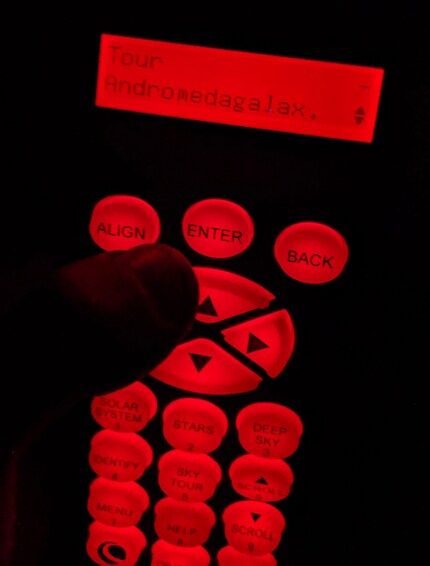
An all-knowing thing
For now, I'm completely satisfied with the options available to me with the control unit in my hand. I try my hand at 3-star alignment. To capture the night sky above me, the NexStar 6SE needs a few points of reference. Firstly, the coordinates of my current position, which I can either enter directly or select from the city database. Then I aim at three different celestial bodies that are as far away from each other as possible.
The moon is comparatively easy to catch. Discovering stars and centring them in the eyepiece is more difficult. I do eventually find a few bright points. The NexStar accepts them and works out the rest of the universe for itself. What an all-knowing thing. Let the magic begin. Now I can automatically point the telescope at planets at the touch of a button, start a tour of the Andromeda galaxy or select celestial bodies I've never heard of before. Ras Alhauge, for example.
I browse through galaxies and constellations and choose what sounds exciting. This has the disadvantage that the NexStar buzzes towards the wall of the house every other time I try it, or it focuses on my head. It's stupid to have no idea what I'm selecting and where it might be in the sky.
Jupiter, the old disco ball
So back to my starting point. The bright dot that first appeared in the night sky. It turns out to be Jupiter, hanging in the sky like a disco ball with its moons dancing around it. My ticker display tells me everything I need to know about Io, Europa, Ganymede and Callisto in leisurely scrolling text. The bright dot in the sky becomes a sphere with stripes when viewed through the telescope. The moons, invisible to the naked eye, become bright dots. It looks great, but I can't get a decent photo through the eyepiece in the semi-darkness of the city and without any other accessories. A list of shaky Jupiter videos on YouTube and the image search show me that it's probably not that simple.
I need to go somewhere where it's really dark and better images are possible. From the telescope and through the telescope. For that I need Tom, our photographer. And we need good weather, because we only have one chance before I have to return the NexStar 6SE. We also need adapters to screw his heavy Nikon to the telescope. In case of emergency, we'll also take the NexYZ adapter with us, which looks like a distant relative of E.T. and should enable decent smartphone photos through the giant tube.
Because they don't know what they're doing
On a cool summer evening, we are standing on the shore of Lake Wägital. We have an appointment there the next morning and have travelled to the area the evening before to go stargazing. The advantage: it's nice and dark and the scenery is fantastic. The disadvantage: we are surrounded by mountains. As even the NexStar 6SE doesn't have a summit X-ray mode, all we have left is a section of the sky and hope. The hope that the clouds will clear and pretty constellations will twinkle above us. A bit of moon wouldn't be bad either.
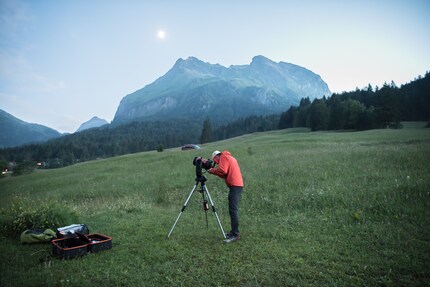
As we take up position on the picturesque shore and I start setting up, the moon is at its best. Half full, it crowns the backdrop. Tom dutifully documents every move I make, then it's ready. Even the alignment works straight away. We set about focussing on the Earth's satellite, which is slowly moving towards the summit of the Fluebrig. We don't have a photo yet. No problem. We still have time, we think, and dabble around with the T-ring, camera and telescope.
In the meantime, it has become dark and very chilly and our fingers are getting clammy. What needs to be unscrewed, what needs to be attached? At some point, the Nikon finally holds onto the telescope and pulls hard on it. We have to balance it and readjust the rail, which of course means that nothing is right in the sky. If you move the telescope just a little bit, all you see is black and you have to realign it. The realignment is made more difficult by a few hazy clouds and the moon has slowly had enough. It plunges faster and faster towards the mountain peaks while Tom, who now has to bend his knees to see the camera display, shoots his first test photos.
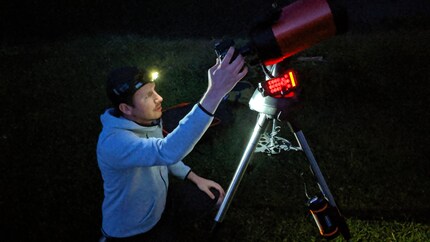
The moon continues to sink unimpressed
We are not entirely comfortable with the construction. And dealing with it takes time, which we don't have. Since we're not interested in long exposures at the moment, but in taking a usable snapshot of the moon, we might as well take the mobile
We want to try NexYZ, the smartphone adapter that can be screwed directly onto the eyepiece. But we fail to attach the adapter. Things get hectic. The moon continues to sink, unimpressed by our problems. At some point, Tom puts his Pixel 3 on by hand, simply holds it up to the eyepiece and pulls the trigger. It works after all. Now the moon can set.
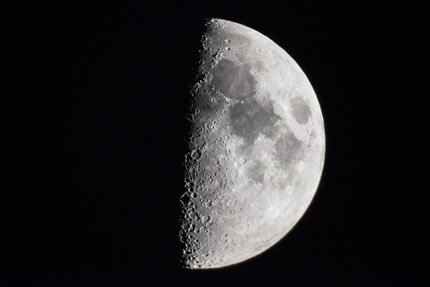
We mentally put a tick behind the moon and turn our attention to more distant celestial bodies. Which isn't so easy, because Jupiter has also made off with Io, Europa, Ganymede and Callisto. There are no other planets in sight. There are plenty of stars twinkling between the veils of clouds, but the sight of them through the telescope is not much more overwhelming than with the naked eye. Tiny bright dots become slightly larger bright dots. Tom devotes himself to telescope-free astrophotography, while I fail to align the NexStar 6SE properly. The StarPointer fogs up, the alignment fails and I am so desperate that I pull the WiFi adapter out of my pocket.
If nothing else works, there's always an app. With SkyPortal (Android / iOS) and the adapter, something should be possible. Should. If the stars were aligned in my favour, I would plug it in now, press "Connect and Align" in the app, realign the telescope and no longer have a problem. I could orientate myself in this beautifully designed planetarium programme, select worthwhile targets and the telescope would automatically move to them.
Could. Would. Think again.
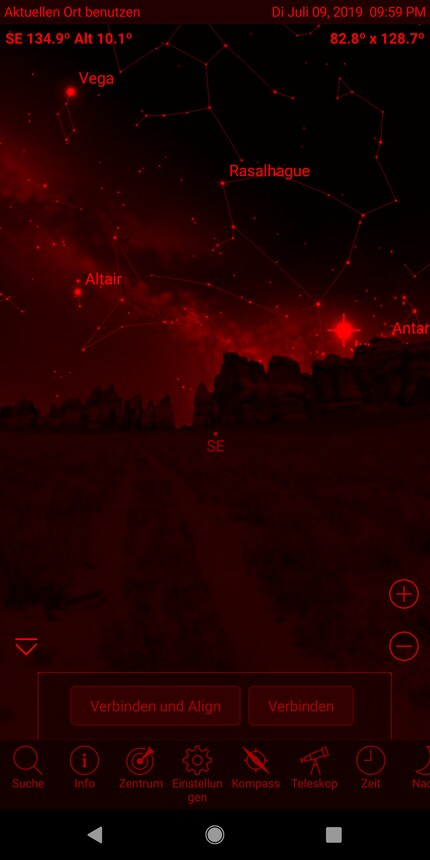
Since I don't live in the subjunctive parallel universe, but am actually standing in a damp meadow, things work a little differently. My mobile actually connects to the telescope and then tells me that it can't control it. Unfortunately, it doesn't tell me why it is unable to do so. The tube can no longer be controlled via the remote control either. While Tom's camera clicks away and uses long exposures to elicit thousands of stars from the sky that are barely visible to the naked eye, I curse the technology and search for solutions. Google, help.
Google doesn't help, however, because I soon get tired of trawling through stargazing forums with half-frozen fingers where users report similar problems. Instead, I try unplugging, restarting and swearing. Then I ask Tom to install the app as well. The result is the same. And I realise two things. 1. if you want to look at stars, it's more fun without a display in front of your nose. 2. if you want to use the app controls, it's better to try them out beforehand.
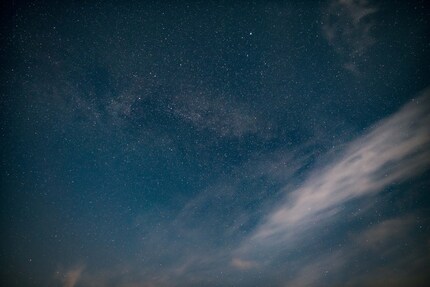
The solution to the problem would probably have been just a Googlehupf away and would probably have had to do with Android Pie. Like mpasarilla from the Cloudy Nights forum, Tom and I were travelling with Pixel smartphones and the latest software version at the time of testing. Nothing worked. The somewhat unsatisfactory way to achieve the goal: cut all connections to the outside world and block the mobile phone network, then the telescope remote control should work via the app.
On our cold and wet meadow, we end the WiFi battle for the giant tube. Enough NexStar Wars. At least we're not alone with our problems. In the Galaxus galaxy, user frenk51 has had similar experiences with another model .
Instead of continuing to search for solutions, we turn our attention back to the night sky. It's streaked with clouds, but still magnificent. I unplug the WiFi adapter and reach for the good old cable remote control. The telescope buzzes again. I swivel it through the darkness on spec and let the sight of unknown celestial bodies work their magic on me. Maybe I see globular clusters, partially dissolved. Or maybe not. And somewhere up there must be Ras Alhauge. I've seen enough for today.
Conclusion: One small step for me, none at all for mankind
My telescope test is like the moon landing. It was a big deal for me, but it was only a tiny first step into the world of amateur astronomy. I've gained some fascinating impressions, but there's so much more to come. I'm light years away from realising all the possibilities you have with a telescope like the NexStar 6SE. Even after a few weeks with the device, I've only got a remote idea of that.
You can experiment with adapters, other eyepieces or filters and optimise your results. There are tens of thousands of celestial objects in the database and just as many opportunities for beginners to despair of the device. This hobby takes time, curiosity and leisure. I do not presume to pass judgement on the NexStar 6SE. I can only recommend it to you: Look at the stars whenever you can. No matter how. With or without a telescope. Put your head back, make big eyes, feel small and enjoy the view.
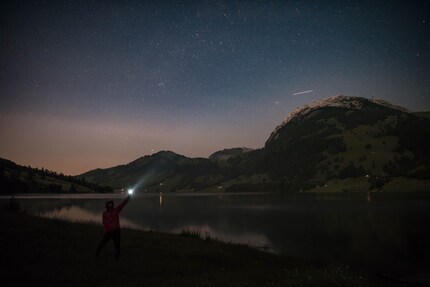
Simple writer and dad of two who likes to be on the move, wading through everyday family life. Juggling several balls, I'll occasionally drop one. It could be a ball, or a remark. Or both.
Interesting facts about products, behind-the-scenes looks at manufacturers and deep-dives on interesting people.
Show all